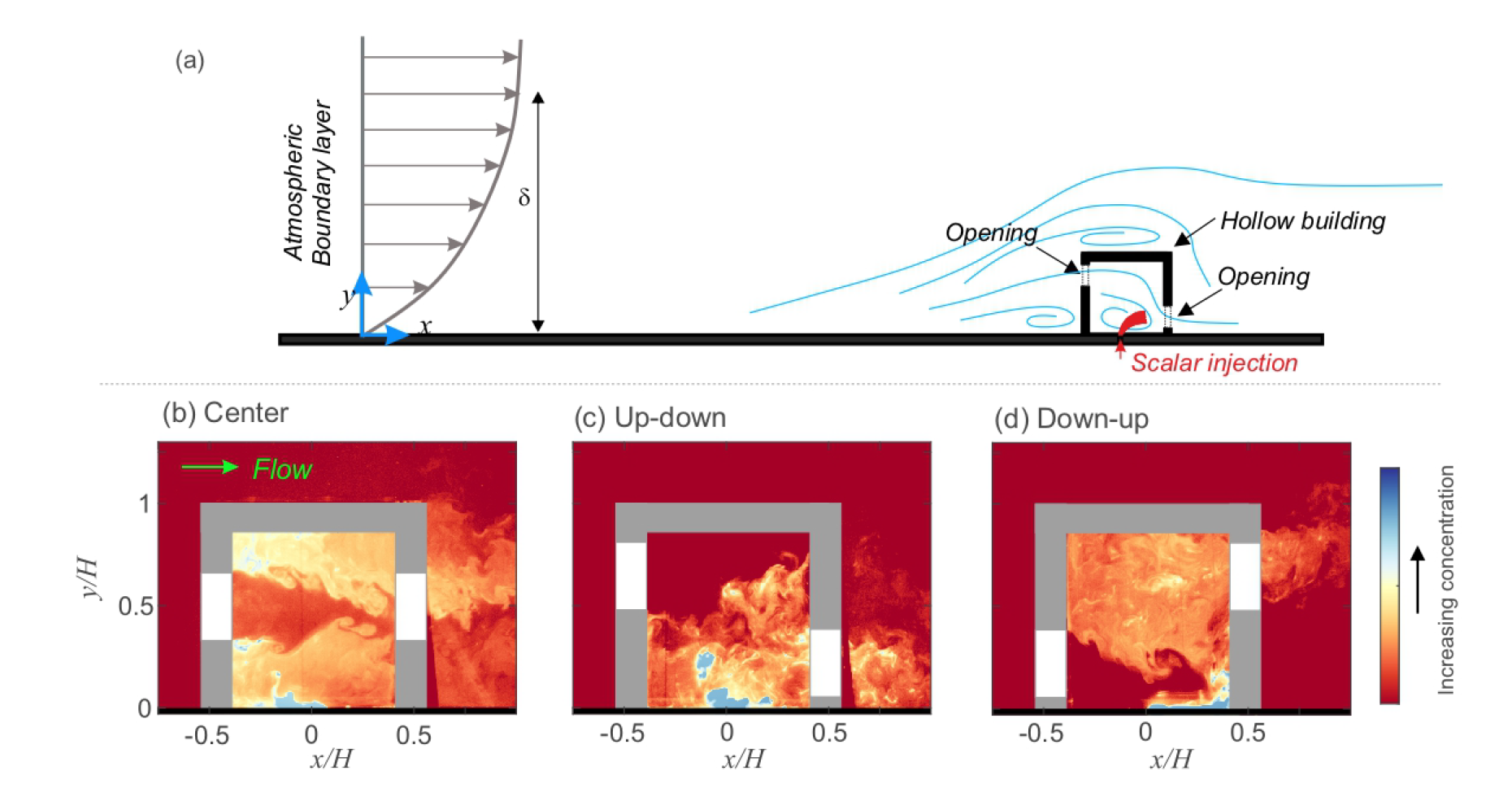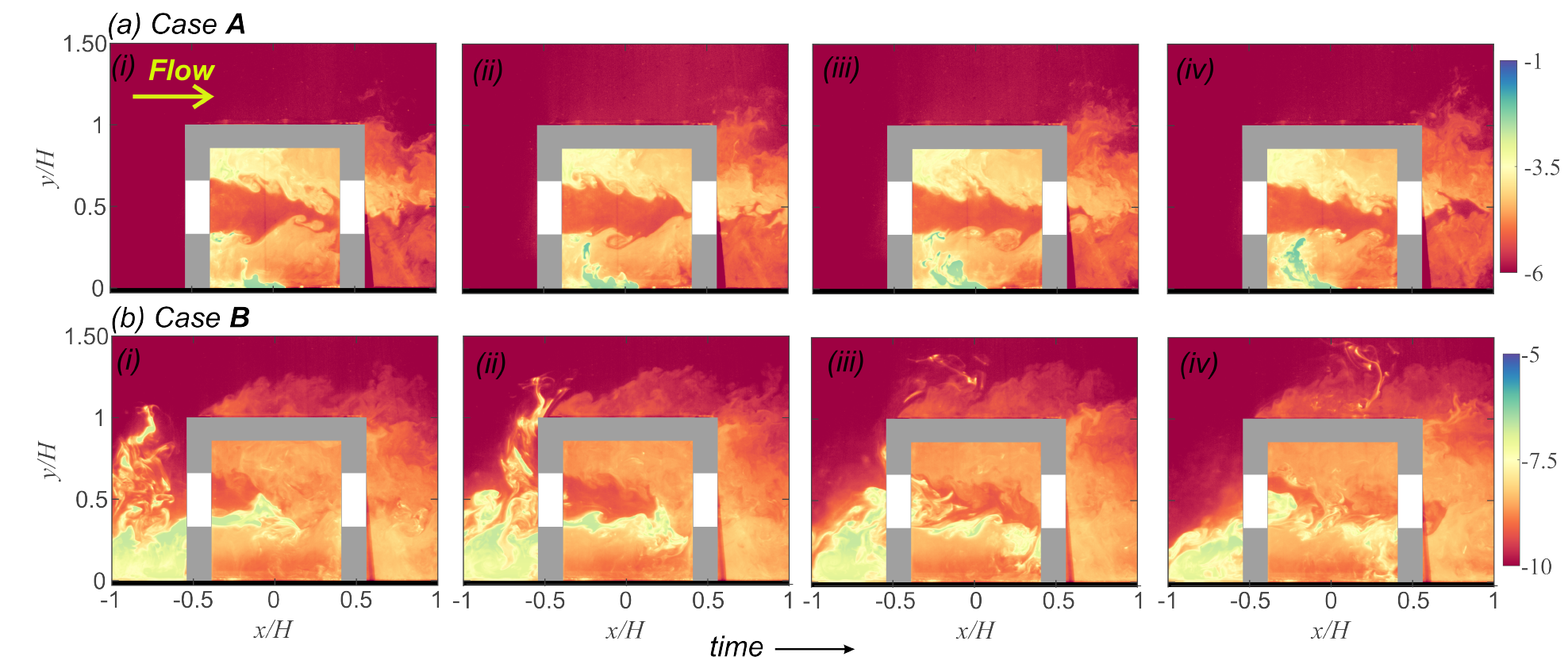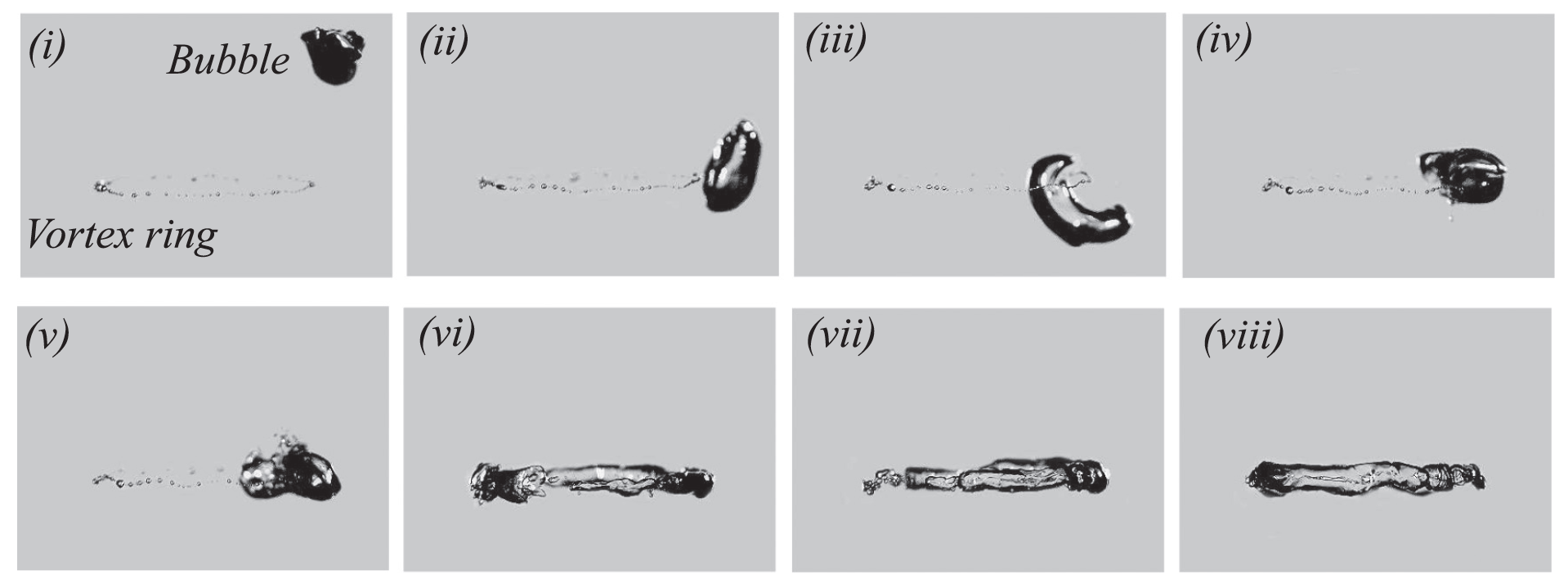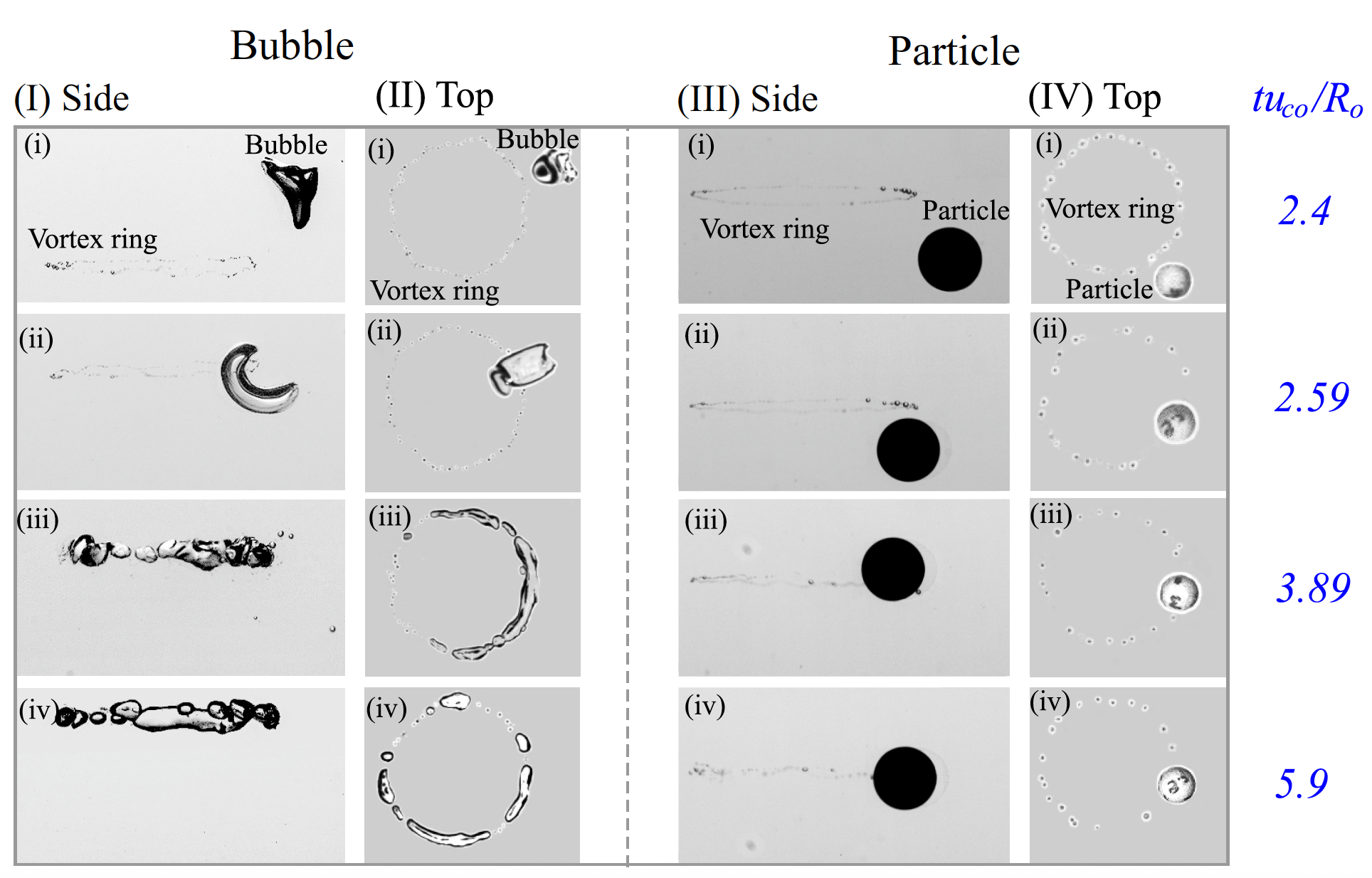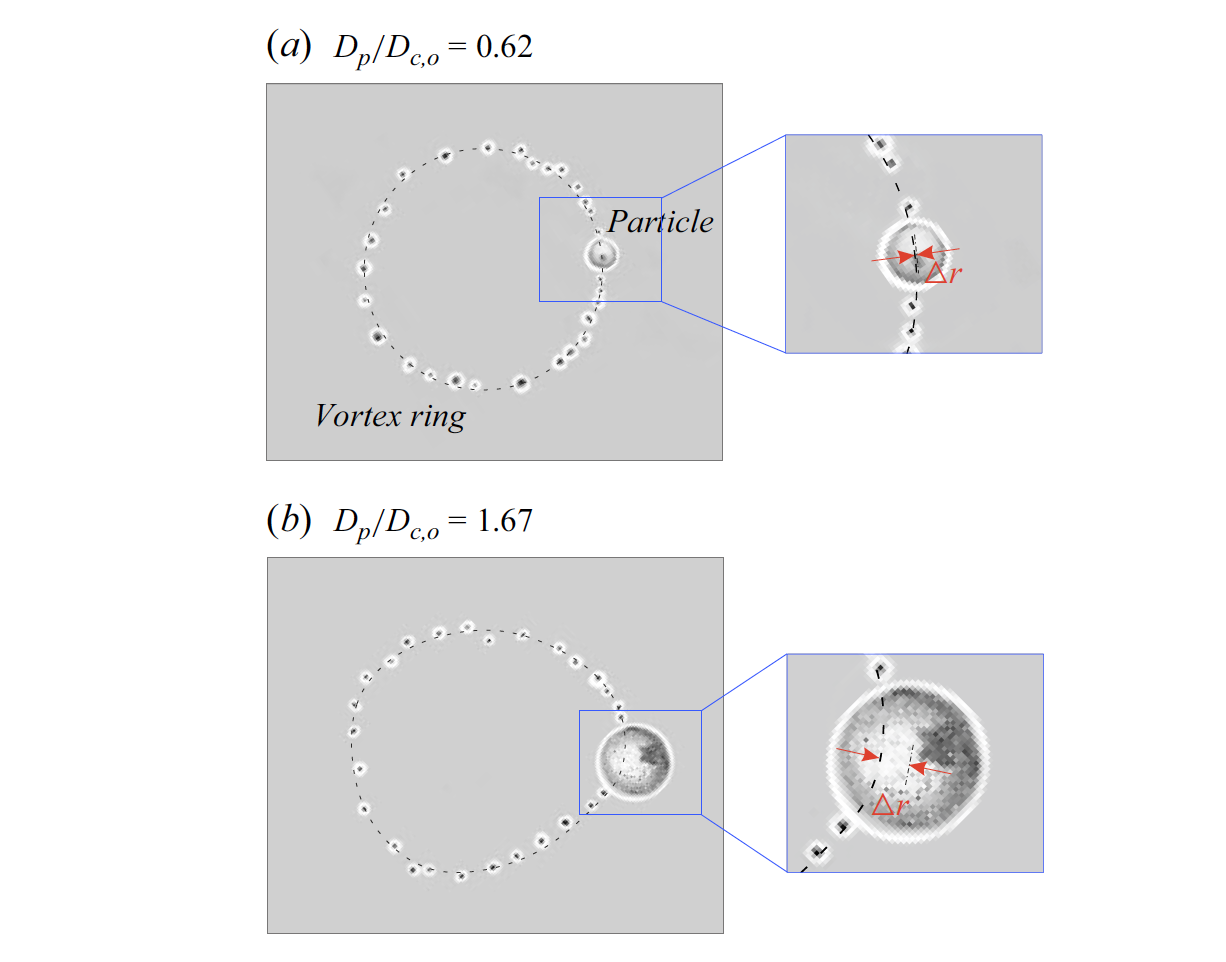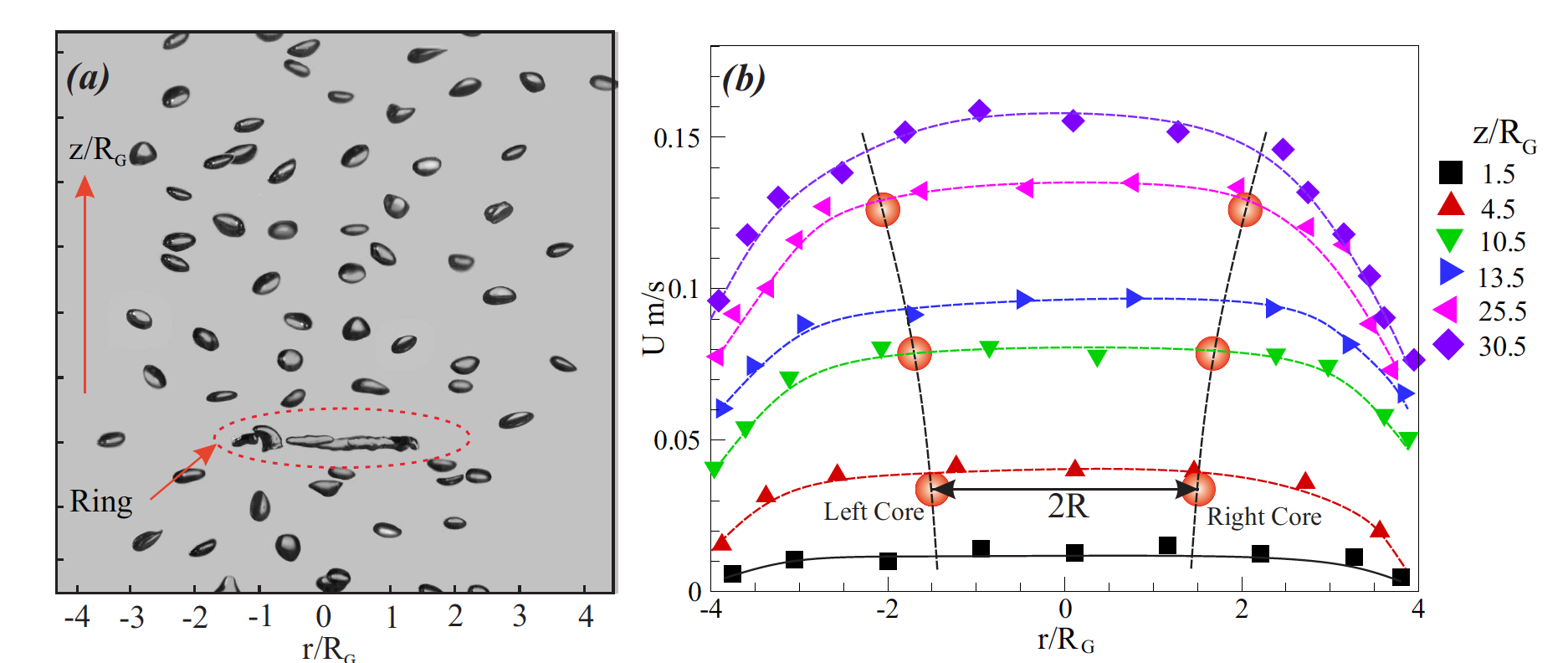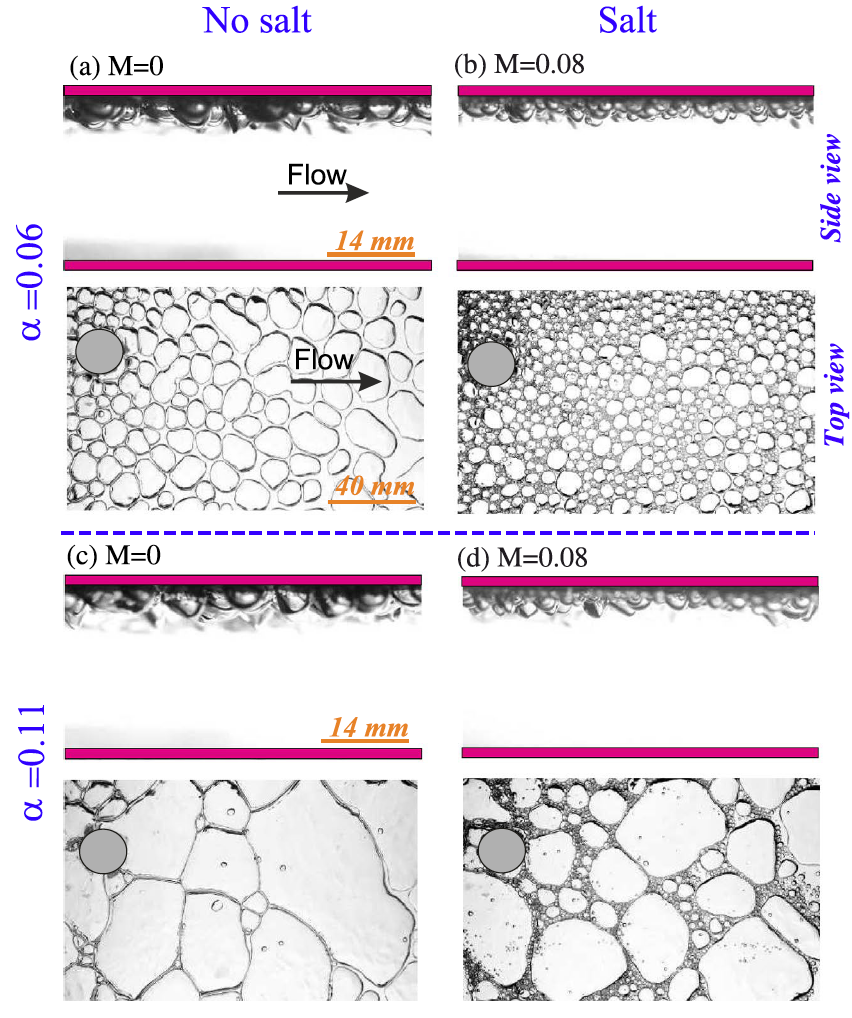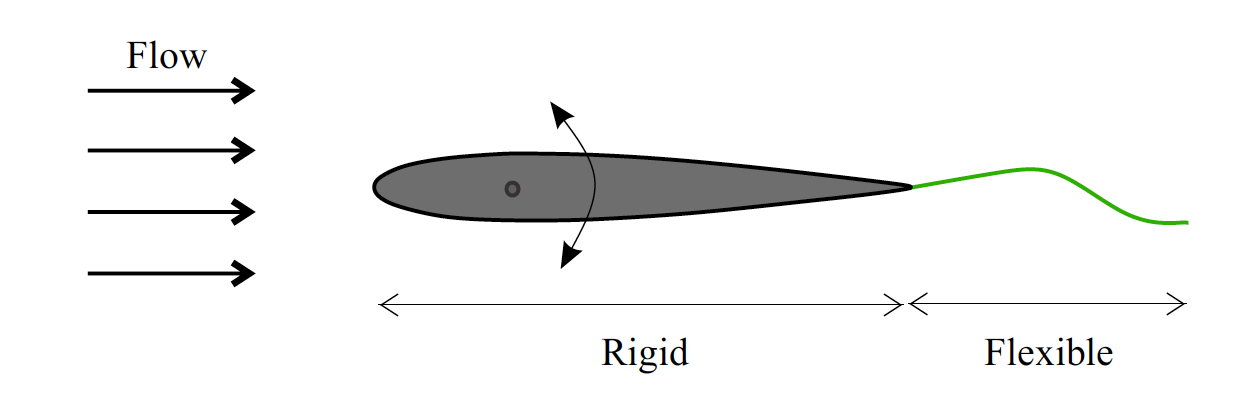My expertise in experimental fluid mechanics broadly encompasses interfacial dynamics, multiphase flows (both turbulent and laminar), drag reduction, environmental flows, and fluid–structure interactions. Currently, I focus on experimentally modelling pollution dispersion in indoor and outdoor environments under atmospheric boundary layer conditions, in collaboration with other research groups specialising in numerical simulations and experiments. Previously, my doctoral research focused on a range of problems related to the fundamentals of the interactions between vortical structures and air bubbles or rigid particles, related to practical applications of multiphase turbulence, such as drag reduction via bubble injection in turbulent boundary layers.
Employment History:
- Postdoctoral Research Fellow, Aerodynamics and Astronautics, University of Southampton, UK (2023 – Present)
- Postdoctoral Researcher, Mechanical Engineering, Indian Institute of Science, Bengaluru, India (2022 – 2023)
Education:
- Ph.D. in Mechanical Engineering, Indian Institute of Science, Bengaluru, India
Thesis: Interaction of bubble(s) and buoyant rigid particles with vortical structures View Thesis - M.E. in Mechanical Engineering, Indian Institute of Science, Bengaluru, India
Thesis: Experimental investigation of thrust generation using rigid and flexible foils - B.Tech. in Mechanical Engineering, Jalpaiguri Government Engineering college, India
Thesis: Particle emission control by using theoretical electro-cyclone model
Research Expertise:
- Experimental fluid mechanics
- Turbulence, aerodynamics
- Environmental flows (pollutant dispersion, ventilation)
- Multiphase turbulent flows
- Drag reduction, vorticity dynamics
- Fluid-structure interactions
Experience with facilities:
- Large-scale Wind and water tunnel (Univ. of Southampton)
- Enflo wind tunnel (Univ. of Surrey)
- Medium scale turbulent channel and water tunnel (Indian Institute of Science)
Measurement techniques:
- Laser Doppler Anemometry (LDA)
- Fast Flame Ionisation Detector (FFID)
- Planar Laser-Induced Fluorescence (PLIF)
- Particle Image Velocimetry (2D/3D, Time-resolved, 2-phase)
- Particle Tracking Velocimetry (PTV)
- Drag measurement
- High-speed imaging and image processing
- Force and moment (Load Cell) measurements
Collaborators:
- Prof. Rghuraman N. Govardhan – Indian Institute of Science, Bengaluru
- Prof. Christina Vanderwel – University of Southampton
- Prof. Zheng Tong Xie – University of Southampton
- Prof. Matteo Carpentieri – University of Surrey
- Dr. Paul Hayden – University of Surrey
- Dr. Ashvin Chaudhari – Turku University of Applied Sciences
---
Flow through a hollow cube in a turbulent boundary layer: towards understanding indoor pollutant dispersion
Indoor air quality is critical for public health since people spend most of their time indoors, where the concentration of pollutants is usually higher than outdoors, and could be life-threatening in cases such as potential gas leaks. In such a scenario, cross ventilation could be crucial in minimizing indoor pollutant concentration through the indoor–outdoor exchange of air. Despite many studies on indoor flow and dispersion, there is a noticeable gap in understanding indoor–outdoor cross-ventilation coupled with indoor dispersion sources. To address this gap, we experimentally investigate the flow through a hollow cube, a scaled-down model building, as an idealized representation, with an indoor ground-level passive scalar source, immersed in a rough-wall turbulent boundary layer. The focus is on characterizing scalar transport within the cube through simultaneous measurements of scalar and flow using Planar Laser-Induced Fluorescence and Particle Image Velocimetry, respectively, studied for different Reynolds numbers. The present study consists of different configurations, distinguished by window positions. Substantial variations in the indoor flow patterns are observed across these configurations, resulting in larger differences in the advective and turbulent scalar fluxes, scalar concentration, and distribution. The analysis is extended by revising the classical “Box-model”, by introducing practical complexities such as non-perfect mixing. The insights from this simplified study can potentially improve our understanding and help model pollutant exchange between indoor and outdoor environments in complex atmospheric boundary layer conditions.
📄 Articles: Flow, Cambridge University Press, 2024 (PDF)
Indoor-outdoor passive scalar exchange in a flow through a hollow building with a ground-level outdoor source
Understanding how turbulent processes transport and disperse air pollution into buildings is crucial for urban planning and occupancy comfort. The present work investigates an idealization of the indoor–outdoor exchange of a passive scalar pollutant in an urban environment. Two cases are investigated where the first one involves an indoor ground-level passive scalar source, and the second one has an outdoor ground-level source placed upstream to the model. The experiments capture the mean and transient behaviours of a scalar and Particle Image Velocimetry (PIV) to capture the velocity fields, with these two being performed simultaneously. Changing the source position significantly alters the scalar transport and distribution inside the model. The indoor injection case shows scalar accumulation in recirculation flow regions near the top and bottom walls inside the cube, while in the outdoor case, a relatively uniform scalar buildup within the cube is observed. These differences are found to be due to the distinction between the two cases in the advective and turbulent scalar transport mechanisms.
📄 Articles: TSFP, Proceedings, 2024 (PDF)
Vortex Ring and Bubble Interaction: Effects of Bubble Size on Vorticity Dynamics and Bubble Dynamics
Bubble/particle-laden turbulent flows involve the complex interaction of many bubbles/particles with vortical structures having a range of length scales. My work experimentally investigated an idealization of these flows, namely, the interaction of a vortex ring (in water) with air bubble(s). In most studies on bubble deformation and breakup in turbulence, the influence of bubble size is not considered independently, as it is usually accounted for through the Weber number. However, alongside Weber number, bubble size can also be a critical parameter since it influences the bubble’s dynamical characteristics and its interaction with vortices. I studied the interaction of a single vortex ring with a deforming air bubble, at different bubble-to-vortex ring size ratios over a wide range of Weber number. Bubble dynamics: Varying size ratio brings striking changes in bubble deformation and breakup dynamics, even at a fixed Weber number, during the initial stage. At later stages, the statistics are nearly independent of size ratio and governed primarily by Weber number. Vortex ring dynamics: The evolution depends on both size ratio and Weber number. Reductions in the ring's propagation speed and enstrophy caused by the bubble follow a scaling over the entire regime of size ratio and Weber number. Above a critical size ratio of about 1.2, significant ring deformation and fragmentation occur.
📄 Publication: Physics of Fluids, Vol. 35, No. 8 (PDF)
Interaction of a rigid buoyant sphere and a deforming bubble with a vortex ring: The role of deformability
In bubbly flows, the deformability of bubbles is critical in governing the dynamics of both the carrier and dispersed phase. To better understand this aspect, I studied the interaction between a rigid buoyant particle (a non-deforming bubble) and a vortex ring at a fixed size ratio, and compared it with bubble–ring interactions. Distinct differences emerge right from the capture phase. Unlike the bubble, which has a quicker capture time due to its large elongation and lower drag, the non-deforming particle takes longer to be captured due to higher drag. Post-capture, the rigid particle does not deform and remains localized within the ring, unlike the bubble which spreads azimuthally. These differences lead to distinct effects on the ring’s dynamics: Rigid particle case (Weber number = 0): The localized perturbation to the vorticity causes greater disruption of the vortex ring compared to the deforming bubble (Weber number > 0). I further varied the particle size and identified several regimes of particle motion within the vortex ring. The scalings for the modified ring characteristics are substantially different than in the bubble case, with a smaller critical particle size.
📄 Publication: Physical Review Fluids, 2022 (PDF)
Interaction of a vortex ring with a buoyant spherical particle: effects of particle size on vorticity dynamics and particle dynamics
This work investigates the interaction of a buoyant (rigid) spherical particle with a single translating (water) vortex ring, focusing on the effects of particle-to-vortex core size ratio on both the particle dynamics and ring dynamics. As the buoyant particle comes close to the ring, it gets captured into the low-pressure vortex core, and the interaction begins. The particle within the core undergoes radial oscillation, spins and translates along the ring’s azimuthal axis. As size ratio increases, the particle undergoes higher-amplitude radial oscillation and a relatively shorter azimuthal translation. The differences in the particle size and its motion within the ring lead to large differences in the ring’s dynamics. A larger particle is seen to lead to a higher ring disruption, substantially reducing the ring’s convection speed and azimuthal enstrophy, which are seen to follow substantially different scaling from the deforming bubble case. The ring disruption is significant above size ratio of about 1, beyond which the ring fragments, with up to 60% drop in convection speed and 90% drop in enstrophy. These results for the rigid particle size effects on the vortex ring dynamics are more dramatic than for a deforming bubble. Our results could help to better understand and model buoyant particle (and bubble) interactions with coherent structures in turbulence.
📄 Publication: Journal of Fluid Mechanics, 2025 (PDF)
Effect of single and multiple bubbles on a thin vortex ring
The focus here is on the interaction of multiple air bubbles (a swarm) with a single vortex ring formed in water. This builds upon the single-bubble study, adding the complexity of many bubbles. As the ring travels through the swarm, it continuously captures bubbles, resulting in a time-varying ratio of total bubble volume within the ring to the ring volume. This leads to more dramatic interactions, weakening the ring faster than in the single-bubble case.
📄 Publication: J. of Flow Visualization, 2020 (PDF)
Effects of salt concentration on top wall bubble injection in a turbulent channel flow: bubble dynamics and wall drag reduction
Many bubble drag reduction (BDR) applications occur in contaminated environments (e.g., seawater) where surface-active agents modify bubble coalescence and affect drag. However, most studies are performed in freshwater, which does not represent real conditions. I experimentally investigated the effects of salt concentration on bubble dynamics and drag modification in a fully developed horizontal turbulent channel flow. Increasing salt concentration reduces bubble coalescence, producing smaller bubbles that change deformability, migration, and distribution. At low flow Reynolds number, the addition of salt dramatically reduces bubble sizes (to ~100 microns) compared to large coalesced bubbles (~cm) in no-salt cases. This reduction in bubble size increases drag, which saturates beyond a critical concentration. At higher flow Re, the effect of salt concentration is smaller.
📄 Publication: Experiments in Fluids, 2024 (PDF)
Fish-like propulsion: thrust generation using 2-D and 3-D flapping foils
Fish use flapping motions to generate thrust, with the oscillating tail as the primary propulsion mechanism. Studying these motions helps understand and mimic efficient thrust generation. I experimentally studied thrust from sinusoidal pitching motion of rigid, flexible, and hybrid foils of varying shapes in a uniform flow at different pitching amplitudes, Reynolds number, and flexibilities. The transient shapes of the flexible foils were characterised using image processing and correlated with measured unsteady forces and moments from a load cell.
